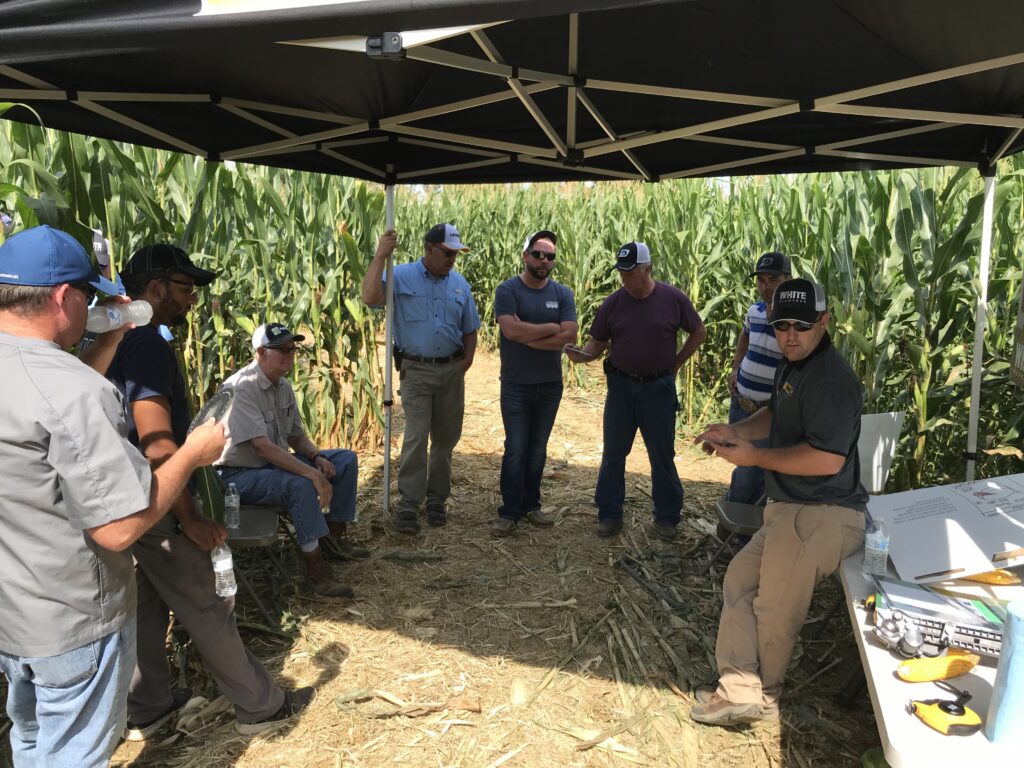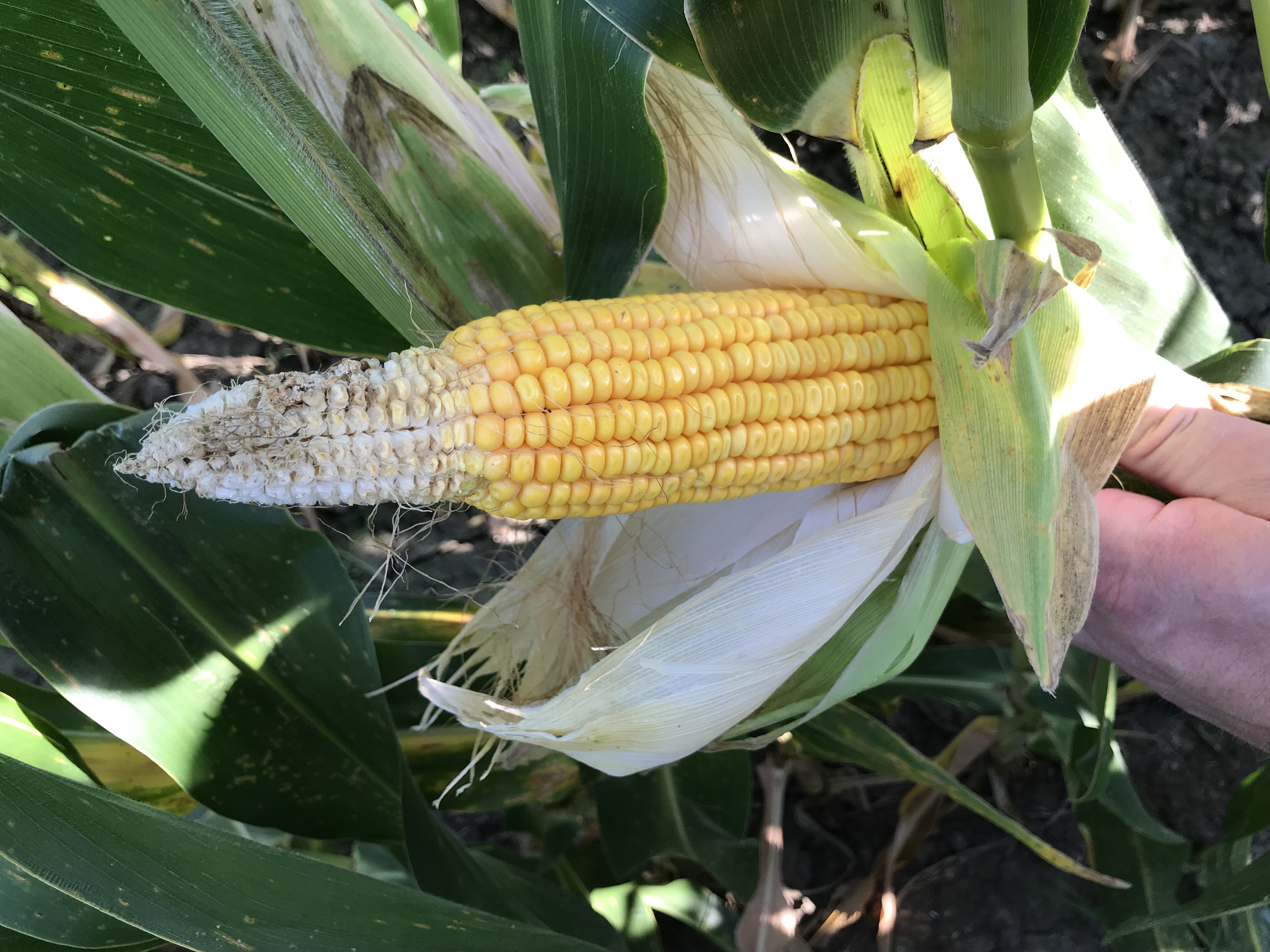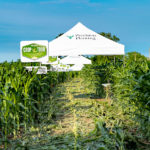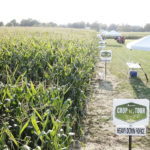Reflecting on the 2019 Growing Season – AGCO Crop Tour
As corn harvest continues, we look back on what we saw and learned during an abnormal weather and crop year. We also have a tip for what farmers can do during harvest to evaluate planting success.

Reflecting on the 2019 Growing Season – AGCO Crop Tour
As corn harvest continues, we look back on what we saw and learned during an abnormal weather and crop year. We also have a tip for what farmers can do during harvest to evaluate planting success.
As many U.S. farmers work to complete what looks to be an extended corn harvest, it’s a good time to reflect what we observed in our 2019 AGCO Crop Tour plots as we prepare to analyze our harvest results. In fact, harvest time is a good opportunity for farmers to evaluate plant spacing and other indicators of planting success beyond bushels going into the cart.
It may go without saying, but 2019 has been an abnormal year. Excessive rainfall and cold weather patterns this spring led to delayed planting for most farmers across the Midwest, and weather challenges were season-long for many of us. In the last decade, farmers have experienced extreme weather patterns on both ends of the spectrum, including, in recent memory, the major widespread drought of 2012 and now the major rainfall in 2019.
While we can’t control these extreme weather patterns, one thing we can do is ensure that we are making the correct management decisions to help our crops withstand some of these major environmental stresses as best we can. So much of that starts at planting – making sure that are plants are properly singulated and evenly spaced, planted at a consistent depth and into consistent moisture for uniform emergence, with a solid soil fertility plan, good soil and residue management, and minimal compaction. These are some of things that we can control to minimize stress and help our plants tolerate stressful conditions.
So, in spite of – and perhaps because of – an abnormal year with tough conditions, conducting Crop Tour plots in several states produced valuable information and lessons to use next season and beyond to get planting right.
Key Agronomic Factors Noted During Crop Tour 2019
Here are some of the agronomic conditions we observed in the Crop Tour plots, once we got them planted and growing:
- Imbibitional chilling injury and prolonged saturated soil conditions reduced stands in early planted trials.
- In some of our earlier planted trials, including in Ohio and Kentucky, overall plant stands were reduced from cold soil temperatures and prolonged saturated soil conditions. Shortly after planting, temperatures fell below 50 degrees, causing seeds to imbibe cold water that resulted in seedling death.
- Lessons: Avoid planting into cold soils, but also pay attention to future forecasts, and make sure that daily temperatures are trending upward and not downward.
- Shallow root development was noted in most Crop Tour field trials this year.
- At a majority of our crop tour locations, overall shallow root development was a common theme. The shallow root development was likely caused by compaction created from the tillage tool, but also from planting when too wet.
- Sidewall compaction and smaller roots systems were also noted where the plot protocol called for planter settings with too much downforce.
- Lessons:
- The important thing to note here is that farmers should wait to do field operations (tillage and planting) when soil conditions are fit, even if that means not planting early. No one will argue that timely planting is not important; however, there are several other things that will determine yield throughout the season besides just planting date. High yields can still be grown even with later planting.
- One of the biggest ways to allow plants to tolerate stress is to ensure a healthy root system. Even though compaction severely stunted root systems this year, weather conditions in most parts of the country stayed wet, and so moisture stress (from drought) never became a widespread issue because of the shallow root systems. However, N uptake later in the season was likely a yield-limiting factor, as nitrate-N leached below the shallow root systems
- Stressful growing conditions led to ear “tip-back.”
- At most locations, kernel abortion at the tip resulted in ears not fully developing kernels all the way to the outer ends. There are several factors that could have attributed to this. Heat stress around pollination and after likely caused some kernels at the top to abort. Shallow root systems caused by compaction earlier in the year and reduced nutrient uptake could have caused more kernels to abort at the tip of the ear than usual.
- Lessons: Again, give corn a strong start by avoiding compaction from tilling and/or planting in wet conditions, if at all possible. Even spacing and singulation plus proper planting depth and downforce all help grow strong roots and fuller ears.
Observational Results of Different Treatments
In this fourth year of the AGCO Crop Tour Program, we continued to compare planting depth, downforce, singulation, seed spacing and other factors in our side-by-side trial plots. Here are some early observations.
- Even weight distribution across the planter bar was important to avoid pinch rows, which:
- Especially occurred in plots with too much down force
- Were also caused by planting when conditions were too wet
- Better seed-to-soil contact with Keeton Seed Firmers helped to:
- Avoid air pockets around seed
- Achieve more rapid and uniform germination
- Skips and doubles impacted kernel development.
- With all of the stressful conditions that plants already had to endure this year, poor singulation and uneven plant spacing exacerbated kernel-development and ear-fill problems. That is why it’s important to make sure seeds are properly singulated and consistently spaced.

Without use of a seed firmer, the top seed is stuck in the upper furrow with poor seed-to-soil contact.
Planting Goals, and Things You Can Still Check During Harvest
A successful corn crop requires hitting these goals at planting:
- Precise singulation
- Consistent seed spacing
- Proper planting depth into consistent moisture
- A clean furrow
It’s important to achieve all factors of the planting process to set the stage for a successful crop. All your seeds could be perfectly singulated and spaced in a clean furrow, but if they’re not planted at the right depth into consistent moisture, uneven emergence is going to limit yield. Similarly, if you get the depth and moisture right, but have a lot of skips and doubles and uneven spacing, yield will take a hit.
You can check that for yourself this fall during corn harvest. A simple exercise is to go out into areas of the field and check your singulation and plant spacing and observe how that’s affecting ear size. Once the combine operator has cut a strip into the field, have someone go to an exposed row mid-field and check for singulation and plant spacing. Lay a tape measure down and, in 17 feet, 5 inches of row (equivalent to 1,000th of an acre), see if the corn plants are equal inches apart at your intended plant spacing. Count the numbers of skips and doubles, and check the ear size and quality of those plants. Repeat in a couple of different areas of the field.
If you find more variation than you want, consider making adjustments in settings for next year or even updating your planter technologies to improve planting consistency, and therefore your yield and return on investment.
Conclusion
Once we have all of the Crop Tour plots harvested and the data analyzed, we’ll report on how the factors in and out of our control affected yield. Scouting and general observations are important when evaluating different methods and treatments, but as always, the proof is in the yield data.
For additional tips and findings from our Crop Tour activities around the globe, click here: http://stageblog.agcocorp.com/crop-care/
Written by: Jason Lee, North America Agronomy and Farm Solutions Specialist, Global Product Management. Connect with Jason on https://www.linkedin.com/in/jason-lee-357b8bab/.





